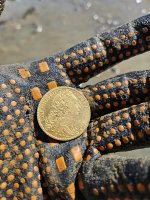Wild Colonial Boy
Hero Member
- Sep 7, 2013
- 599
- 834
- Detector(s) used
- equinox 800
- Primary Interest:
- All Treasure Hunting
Just reading Andy Sabisch book, and I noticed a few experience detectorist go for 0 Ground balance
also I was listening to a Mine lab engineer at Detectival in UK when he was explaining Vanquish and that multi alone can read through most soils,
I always ground balance the numbers go usually from 16 to 24 in this area, CT, NY sandy stoney soil usually acidic
should I be doing it at all, and is there a big advantage to running 0 ground balance with reading tricky signals or good stuff trapped in iron or depth?
would be interested to hear peoples perspective on this
also I was listening to a Mine lab engineer at Detectival in UK when he was explaining Vanquish and that multi alone can read through most soils,
I always ground balance the numbers go usually from 16 to 24 in this area, CT, NY sandy stoney soil usually acidic
should I be doing it at all, and is there a big advantage to running 0 ground balance with reading tricky signals or good stuff trapped in iron or depth?
would be interested to hear peoples perspective on this




